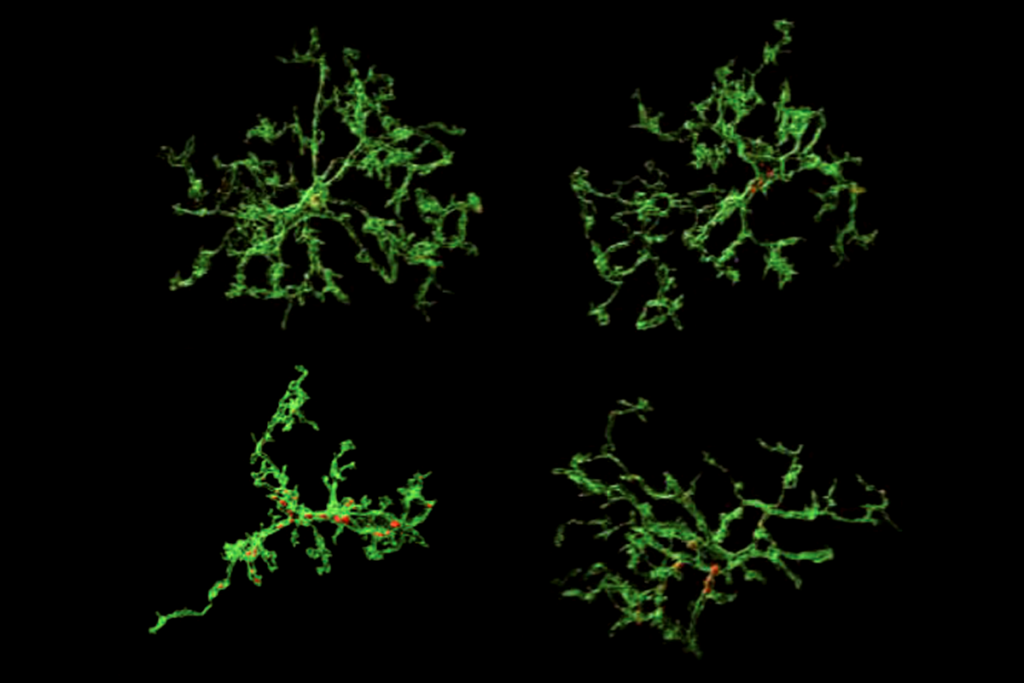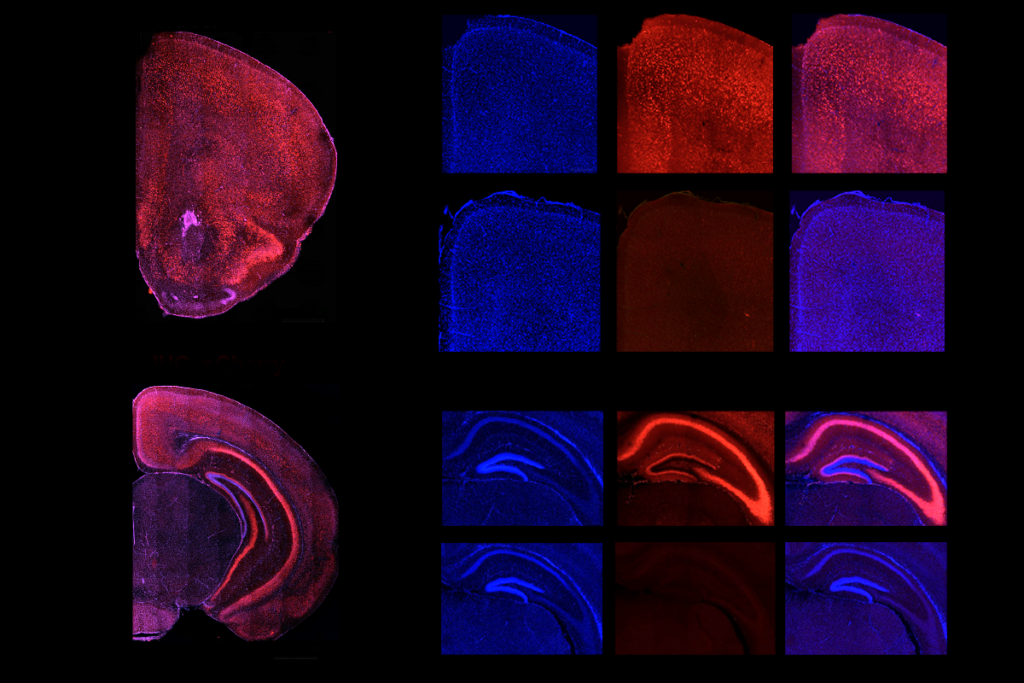
Pregnant women’s immune response could lead to brain disorders in her children
Maternal immune activation — caused by infection or even psychological stress during pregnancy — is a strong risk factor for neurological conditions such as autism.
Pregnant women, like everyone else, get sick. And like everyone else, their bodies try to fight infection and, importantly, keep it from reaching the growing fetus.
If the mother’s immune system successfully defeats the virus before the developing baby is exposed or if the virus never crosses the placenta, is harm averted?
![]()
Counterintuitively, this protective response may be a risk factor for some neurological conditions in the baby later on.
This is the question that researchers, including me, have been probing at the neurodevelopment lab at the University of California, Davis. Research suggests that the mother’s defensive immune response — to an infection, for instance — alone is sufficient to cause lifelong changes in brain architecture and function and in behavior in the child. This response is a strong risk factor for brain disorders such as autism and schizophrenia.
Kimberley McAllister, who leads the neurodevelopment lab, and I reviewed recent research about what is called maternal immune activation (MIA) in people and in animals in an article published 19 August in Science. So what do we know so far about MIA and where research is headed?
What is maternal immune activation?
Maternal immune activation refers to the mother’s immune system defensive response to invading pathogens. During pregnancy the immune system changes to accommodate the needs of the growing fetus. These changes are complex and depend on the stage of pregnancy and the pathogens the woman encounters. The intensity of the immune response is highly individualized and represents a complex interaction between the mother’s genes and environment.
A study in humans has suggested that the degree and duration of MIA determines the risk of a child being diagnosed with a brain disorder later on, such as autism or schizophrenia. And infections aren’t the only cause of MIA. For example, an increased risk is also associated with psychological stress during pregnancy, which triggers a similar immune activation.
Studies like these identify associations, but not causation. However, animal studies support a causal role for these risk factors and are beginning to reveal the underlying mechanisms.
Why does MIA increase the risk of brain disorders?
Every pathogen has its own unique signature and trick up its sleeve to subvert the body’s defenses. However, at least during the first days of infection, the immune system initiates a standard response. We are all familiar with its consequences: fever, lethargy, aches and pains.
While the body weathers these symptoms, the immune system is hard at work deploying communicative proteins called cytokines, which tell immune cells where to go and how to destroy invading pathogens.
During an infection, the concentrations of cytokines change rapidly in order to guide the immune response. Too little and you succumb to the pathogen; too much and you die of sepsis. And besides telling immune cells where to go and what to do, cytokines have also been shown to play integral roles in brain development in animal models.
During pregnancy, the mother’s cytokines can affect the fetus.
In the developing brain, the concentration of cytokines is tightly regulated. Here, too little or too much in the wrong place or at the wrong time can alter the architecture and function of the developing brain.
Although the full repertoire of these changes is unknown, studies using animals have shown that altering cytokine concentrations changes how brain regions are connected to one another and how they communicate. These types of alterations in specific areas of the brain are thought to underlie numerous brain disorders.
Our lab has shown that these cytokine changes in the fetal brain are lifelong and region-specific. Another recent paper showed that a greater concentration of a specific cytokine, IL-17, within the fetal brains of mice was sufficient to lead to brain changes, which resulted in altered behaviors associated with autism and schizophrenia. Cytokine changes are also associated with another indicator of brain disorders: alterations in the number of connections made between neurons.
Whether or not these cytokine changes are a cause of these disorders in humans remains to be seen. But there is evidence from postmortem brain samples taken from individuals with autism and schizophrenia that show altered concentrations of cytokines.
The ultimate goal is to identify a cytokine profile that predicts certain behaviors and neurological disorders in animals. In the future, we could potentially use this profile to identify biomarkers of specific brain disorders in people.
MIA, genetics and environment:
Over the past decade, hundreds of genes have been associated with a wide range of brain disorders. However, each of these genes increases risk only slightly. Any number of combinations of the associated genes may result in a brain disorder such as autism.
To us, research suggests that the maternal infection acts as a disease primer. In other words, maternal immune activation may make the fetus more susceptible to genetic and environmental risk factors.
Hypothetically, if the fetus experiences a low dose of MIA, and as an adolescent experiences stress or uses cannabis, the combination might trigger brain changes that could lead to schizophrenia.
Researchers are just starting to explore how genetic and environmental risk factors combine with MIA. These studies will help to explain why the outcomes of MIA are so diverse. The good news is that the majority of cases do not lead to any observable disorders.
Although this may sound like a daunting challenge, important progress is being made. For example, many of the genes we know to be associated with certain conditions appear to be related to one another in how they function in the brain, which gives us insight into what brain processes are disrupted when people have these disorders.
This may explain the role cytokines play in raising risk for these disorders. They transmit messages from one cell or tissue to another, triggering numerous changes within the receiving cell. The processes and pathways in the brain that cytokines may disrupt may be the same processes and pathways that the risk genes disrupt as well.
If this is the case, it suggests we may be able to develop new therapeutics that benefit individuals with different disorders, regardless of whether the cause of the disorder is primarily environmental, like a maternal infection, or genetic.
Where is this research headed?
Numerous questions remain unanswered in our field. Why do only some children born to women who experience MIA go on to develop these disorders? How can we identify high-risk pregnancies? What combination of genetics and environmental risk factors distinguish autism from schizophrenia or Alzheimer’s disease?
All of these questions are currently being explored using animals, and the initial findings are both astounding and hopeful. For example, some behavioral features of these disorders can be prevented with early intervention or even reversed in autism-like disorders in adulthood.
Moreover, some of these interventions are noninvasive and involve altering gut microbiota and immune system signaling. Whether or not similar approaches will work in humans remains to be seen.
If MIA does indeed act as a disease primer for a wide range of brain disorders, it is imperative that we identify groups at higher risk and develop therapeutic interventions. Climate change, population growth and urbanization all increase the risk of exposure to pathogens. The social, economic and emotional tolls are too substantial to ignore.
MIA risk has always been there. It is only our understanding that is new. By studying MIA, we may now begin to reveal common principles underlying seemingly disparate brain disorders. And most hopefully, we may harness these insights to increase our resilience.
![]()
This article was originally published on The Conversation. It has been slightly modified to reflect Spectrum’s style.
Recommended reading

Constellation of studies charts brain development, offers ‘dramatic revision’

Functional connectivity links with autism, not ADHD; and more

Ramping up cortical activity in early life sparks autism-like behaviors in mice
Explore more from The Transmitter

‘How to Change a Memory: One Neuroscientist’s Quest to Alter the Past,’ an excerpt
